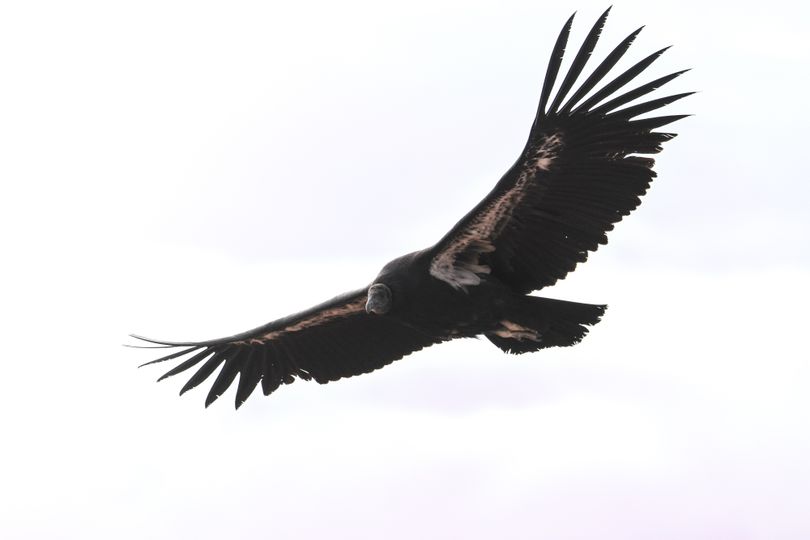Utah condor chick lost; AZ chicks soaring

ENDANGERED SPECIES -- Endangered California condors appear to be two-for three this year in efforts to recover the endangered species to historic range in Arizona and Utah.
While no carcass has been spotted or found, biologists following the first documented California condor chick hatched in Utah have reluctantly conceded that the rare raptor has died, reports Brett Prettyman of the Salt Lake Tribune.
“The loss of Utah’s first chick is a hard reminder that critters have a tough go of it in the wild. It’s just a shame that we weren’t able to recover a carcass to examine what might have provided clues as to the cause of death,” said Chris Parish, condor program director for The Peregrine Fund.
National Park Service, Utah Division of Wildlife Resources and Peregrine Fund biologists also confirmed the existence of the chick without actually seeing it this past spring, based on the behavior of the adult pair.
Here are details from Prettyman's report:
Condors 337 (male) and 409 (female) displayed enough courtship and chick feeding behavior in the spring to give the biologists enough confidence to say a chick had hatched in a remote nest cave high on a cliff in Zion National Park.
Behaviors the adults are displaying now are a major reason the biologists elected to declare the chick as deceased. The adults remain in Zion National Park, but are not returning to the nest or delivering food.
The chick was expected to leave the nest for its first flight sometime in November. Condors have the longest fledging period of all North American birds, roughly six months.
The cause of the suspected death remains a question and will likely remain a question.
“How it happened is speculation at this point. It could have been a number of things,” Parish said.
The chick could have attempted to fledge and perished, but no body has been discovered in the area below the cave nest. The body could have been consumed by another animal.
This was the first chick for condors 337 and 409 and it is possible they failed to provide the care required to get the young bird to fledging stage.
Lead poisoning, according to Parish, has led to 50 percent of deaths of the experimental population of California condors released in the Vermillion Cliffs area of Arizona in 1996. Officials have confirmed 29 condor deaths related to lead poisoning since 2000.
Lead is ingested by the condors scavenging on the remains of wildlife or domestic livestock killed with firearms. Efforts in Utah and Arizona to get ranchers and hunters to use lead-free ammunition and to remove gut piles from the field has helped reduce condor mortality in recent years.
It is possible the chick could have perished from lead poisoning, but it is highly likely that the parents ate the same carrion and they appear to be healthy.
Even condors that learn to fly face a 60 percent chance of dying within the first year, according to Parish.
While biologists are disappointed to declare the Utah chick a loss, they are excited that two other chicks born in the wild in Arizona are flying and appear healthy.
The condor breeding season is just getting underway and biologists will be watching the Utah parents closely. “They can start laying eggs as early as February,” Parish said. “It is possible this pair may try again.”
It is also possible they may choose the same nest cave.
Biologists had considered trying to reach the nest to see if they could confirm the chick’s death, but storms have made it dangerous.
As time has gone by, the likelihood of determining the cause of death has dropped, even assuming the carcass is still in the cave.
“Ravens may have already cleaned out the cave,” Parish said.
